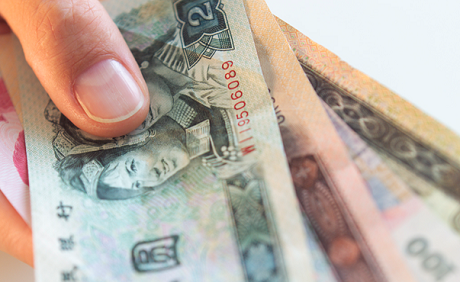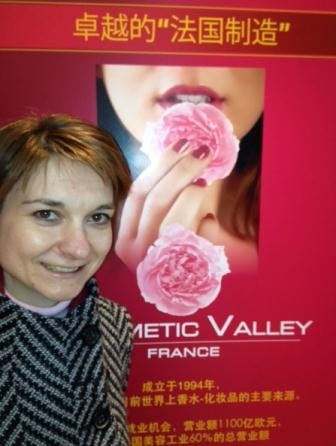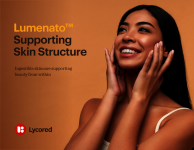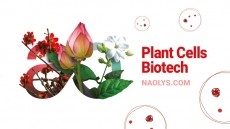Cosmetics sales in China holding their own
Despite recent reports that China may be experiencing a downturn, an analyst for Shanghai's China Market Research Group, Wang Jaijun, noted that "the market is still growing, but just at a slower pace than in previous years."
In fact, plans to expand by some of the industry's biggest international companies like Estee Lauder, Mary Kay and Shiseido indicate that the market still has room for growth.
International brands still considered most ‘trustworthy’
Currently, there is more than 5,000 cosmetic companies in China, of that international brands are said to still said to be dominating more than 80 percent of the market share, according to Chinese business magazine Global Entrepreneur.
According to Market Research Group analyst Wang, "European and U.S. brands are very strong in the higher-end market as they are viewed as having superior technology, such as anti-aging creams, and quality.”
Amongst these, Estee Lauder is said to be the best-selling brand in China and just recently introduced a new line Osiao specifically for Chinese customers.
"With a 28 percent growth in sales, China is now the hottest-selling market for cosmetics in Asia, surpassing Japan," says an Estee Lauder spokesman.
Meanwhile, Japanese-based Shiseido is said to have maintained double-digit sales growth in China annually since 2004. Last year, sales reached 89.1 billion yuan for the period ending March 31.
"China now accounts for 11 percent of our global business," says Yang Yan, PR manager at Shiseido China.
Shiseido has also recently expanded its sales channels into specialty cosmetics stores that are more popular in lower-tier Chinese cities, selling mostly its Urara and Pure&Mild brands.
"Asian brands are more focused on all-natural products that enhance appearance, for example, with hydrating lotions or skin-whitening creams, which are very attractive to younger consumers in the 15-30 age group who are less focused on maintaining their youthful appearance," Yang adds.
Tips for continuing success..
Finally, the Market Research Group analyst notes that customer service remains crucial to the cosmetics industry if brands are to stay on top.
"A big part of that involves staff training, and that cosmetics giants need to train their salespeople, or beauty assistants, in how to recommend products, and push sales," he explains.
"Many purchases are still impulse purchases, and many consumers want to learn more about products. They will simply walk away if staff cannot inform them," he adds.








![Able C&C has furthered its partnership with Japanese discount chain Daiso with new makeup launch. [A'pieu]](/var/wrbm_gb_food_pharma/storage/images/_aliases/wrbm_tiny/publications/cosmetics/cosmeticsdesign-asia.com/headlines/brand-innovation/a-pieu-and-daiso-launch-exclusive-2-makeup-line/17339117-1-eng-GB/A-pieu-and-Daiso-launch-exclusive-2-makeup-line.jpg)
![Down Under Enterprises is setting sights on the Asian market as environmental sustainability and traceability become increasingly important. [Getty Images]](/var/wrbm_gb_food_pharma/storage/images/_aliases/wrbm_tiny/publications/cosmetics/cosmeticsdesign-asia.com/headlines/market-trends/down-under-enterprises-shifts-focus-to-china-as-environmental-sustainability-traceability-come-into-the-spotlight/17304932-1-eng-GB/Down-Under-Enterprises-shifts-focus-to-China-as-environmental-sustainability-traceability-come-into-the-spotlight.jpg)
![News updates from Shiseido, Dr.Ci:Labo, Sephora, and more. [Shiseido]](/var/wrbm_gb_food_pharma/storage/images/_aliases/wrbm_tiny/publications/cosmetics/cosmeticsdesign-asia.com/headlines/brand-innovation/updates-from-shiseido-dr.ci-labo-sephora-and-more/17334944-1-eng-GB/Updates-from-Shiseido-Dr.Ci-Labo-Sephora-and-more.jpg)

![Clariant has underscored the importance of localisation strategies and distribution capabilities in China with beauty trends evolving at a rapid pace. [Getty Images]](/var/wrbm_gb_food_pharma/storage/images/_aliases/wrbm_tiny/publications/cosmetics/cosmeticsdesign-asia.com/article/2024/04/16/clariant-emphasises-importance-of-localisation-in-the-era-of-viral-trends/17327969-1-eng-GB/Clariant-emphasises-importance-of-localisation-in-the-era-of-viral-trends.jpg)

![We dive into our most-read stories on formulation and science. [Getty Images]](/var/wrbm_gb_food_pharma/storage/images/_aliases/wrbm_tiny/publications/cosmetics/cosmeticsdesign-asia.com/headlines/formulation-science/skin-science-latest-stories-on-cosmetics-science-and-formulation/17334719-1-eng-GB/Skin-science-Latest-stories-on-cosmetics-science-and-formulation.jpg)


